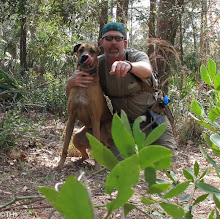This is sort of an apples to oranges to pears review. They are all related via the base design, which is the old US military entrenching tool. Each has similarities in that they have a shovel/digging capability, then things diverge wildly in some cases.
Set up…I was looking for a tool that would be easily carried on my get home bag (GHB) and/or bugout bag (BOB). Now remember…as with anything in any review, what works for me (or not) may or may not work for you.
Crovel Extreme (Link)
Cost: ~$109 (without case)
Weight: +5.5lbs
Length:
This is a very interestingly designed item. Basically an e-tool with a crowbar/hammer on the handle end. This is a solid, heavy duty tool, solid construction with a few extra features. Handle is hollow inside for storage of small items, but this does not compromise the sturdiness of the tool. Handle is also wrapped with paracord (nice touch but mine came unraveled after splitting wood). Locking nut is very solid with no chance of slippage out of locked 'pick axe' or shovel head position. Shovel head has serrations on one side for sawing and semi sharpened edge on the other for splitting (not sharp enough to cut wood against grain) plus a bottle cap remover. All main metal parts have a heavy duty powder coating on them. Obviously the designers wanted people to have a shovel, axe, saw, pick axe, crowbar, hammer all in one. Let's see how it performed on each of these tasks…
Digging/Pickaxe: This is by far the Crovel's strong suit. Due to it's sturdiness, weight and heavy duty locking nut, the Crovel beats the other 2 hands down. The crowbar/hammer handle end allowed for extra grip and leverage. The only design change here would be a more pointed shovel head…crucial for getting through the tough shallow root system that exists in the swamp. One drawback was sometime the crowbar head would bite into my forearm if I was gripping the handle instead of the crowbar end while in pickaxe mode.
Crowbar/hammer: Though a neat idea this part gave me problems. Due to the position of the crowbar/hammer, I was very limited on the amount of swing I could use due to the shovel head either getting in the way or biting my forearm (see pics). Also due to the angle of the crowbar head, insertion between a door and door jam was very limited. Zero angle would help somewhat, though the shovel head might get in the way regardless.
Shovel head position limits ability to insert crowbar head between door/doorjam interface.
Regardless of pivot position shovel head makes contact
Saw/chopping: The saw blade side of the shovel head is rather inefficient since the teeth are triangular and not off set. A substantial amount of effort was required. As to being used as a weapon…this would be the side to apply....due to the weight of the tool..probably the most deadly of the 3. The Crovel plain side is beveled, but not enough for chopping. It can be used for splitting seasoned wood…it's heavy weight allows it to be top in this aspect.
Conclusion:
At over 5.5 pounds, it simply is too heavy to add to a GHB. BOB…perhaps if one excludes other tools. The challenge would be it would need to be attached near the torso since heavy weights should be mid/center and as close to body as possible when packing. Problems with the crowbar/hammer head utilization, make this aspect of the tool rather limited. The threaded shaft area the locking lug rides on quickly began to rust and will require a thin coat of grease to prevent future problems (minor issue). Though I like the concept of the Crovel it's use beyond a shovel (or last ditch weapon) is limited in my mind.
Glock E-tool (Link)
Cost: ~$34 (with case)
Weight: 2 lbs
Length:
The Glock e-tool is a simple design digging tool with a small added feature of a saw blade inside the handle. This is the most compact out of the 3.

Tool in it's most compact form. Adjacent pic shows the saw.
Digging/Pickaxe: The pointed nature of the blade help for digging and pickaxe. Handle telescopes out and is locked in place by rotating counterclockwise. Shovel head is fixed in position by a tightening nut that maybe could be a bit larger. The lightweight did transfer 'shock' from striking roots back to the handlers arm/wrist.
Saw/cutting: The saw blade attachment does the job well on small limbs and roots. Also would make an excellent bone saw for quartering large game. This tool has no chopping/splitting function.
Conclusions:
Lightweight/lack of mass require more energy for digging, etc.. Not intended as a weapon. This is the most lightweight of the tools, thus additional tools such as an axe and crowbar will also be needed to be carried. Case is a bit weak and may wear out quickly (I'll update if it does). Since this tool has a few parts that separate…there is the possibility that they could be lost. This will mot render the shovel aspect inoperable, but obviously the saw would be.
Cold Steel SF Shovel (Link)
Cost: ~$26 (without case...+$10)
Weight: 1.66 lbs
Length:
This is the simplest of all the designs, based on the WW2 style. Straight solid wood handle with steel head. The entire edge of the shovel head is VERY sharp. Why the cover is sold separately makes zero sense to me..it is a must have item.
Digging: No problem here…goes through roots and dirt rather well. Handle is easy to grip and sturdy (except when wet..wrap some duct tape for better grip).
Chopping/Splitting wood: The best out of the 3….roots with 1 swing. Very sharp blade, branches 3 inches thick were not a problem. Splitting it was second to the Crovel due to lack of mass only.
Conclusion: Can be used for digging, chopping, zombie head removal…no pickaxe option. Blade is sharp and MUST have a case. Between the Crovel and Glock tool in size. Though listed as lighter than the Glock, it felt a bit heavier/solid. Edge did show some light rust, thus a thin coat of grease will need to be applied. Cold Steel also shows how the shovel can be thrown and impale targets…I'm not a big fan of throwing tools, knives, axes, etc..the penetration done is usually less than incapacitating. If you miss, your intended target now has your tool/weapon.
So which to carry?
-I was excited about the Crovel, but disappointed with the results due to the design issues I mentioned and the weight. It's cost (5 times more than next reviewed), perhaps caused me to be a bit more critical, but I believe this is warranted of any high priced item.
-The Glock tool certainly being the lightest/most compact is the easiest to carry, but it's rather non-solid feel gives me pause. I plan on putting it through a similar abuse the SF tool went through…if it holds up it will get the nod...I will update.
-The Cold Steel, I worked the heck out of it to see at what point the wooden handle would break (hammer, prybar..and yes, I did the throw thing…it did break (10th throw....Cold Steel sells replacements), but I would probably not use it in such a way. At the moment it is my top pick (with case). Yes, you can throw it and it sticks into targets...neato!..not practical unless it is the last thing you have and you want to make your enemy bleed before you expire.














































